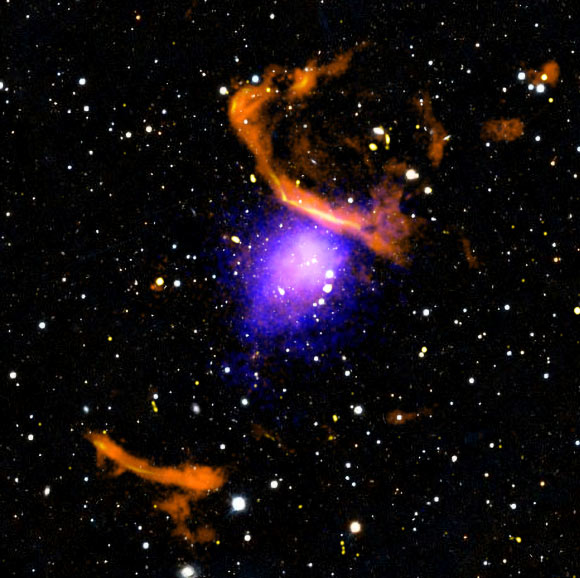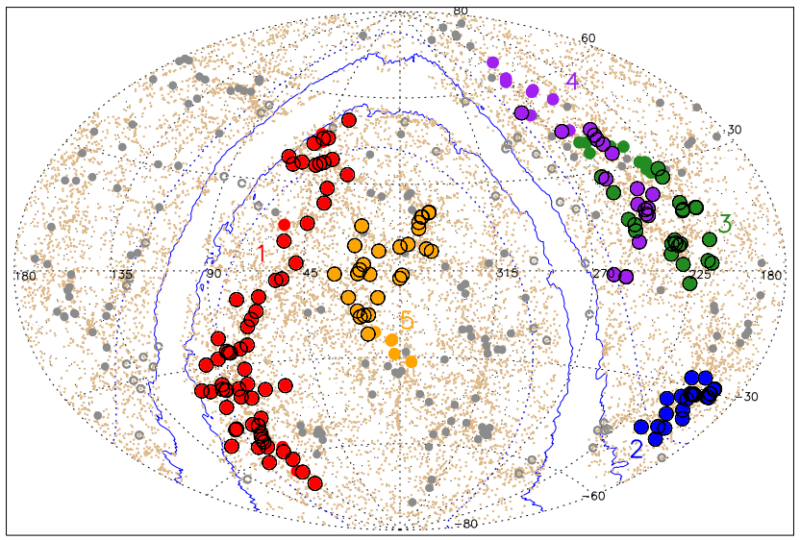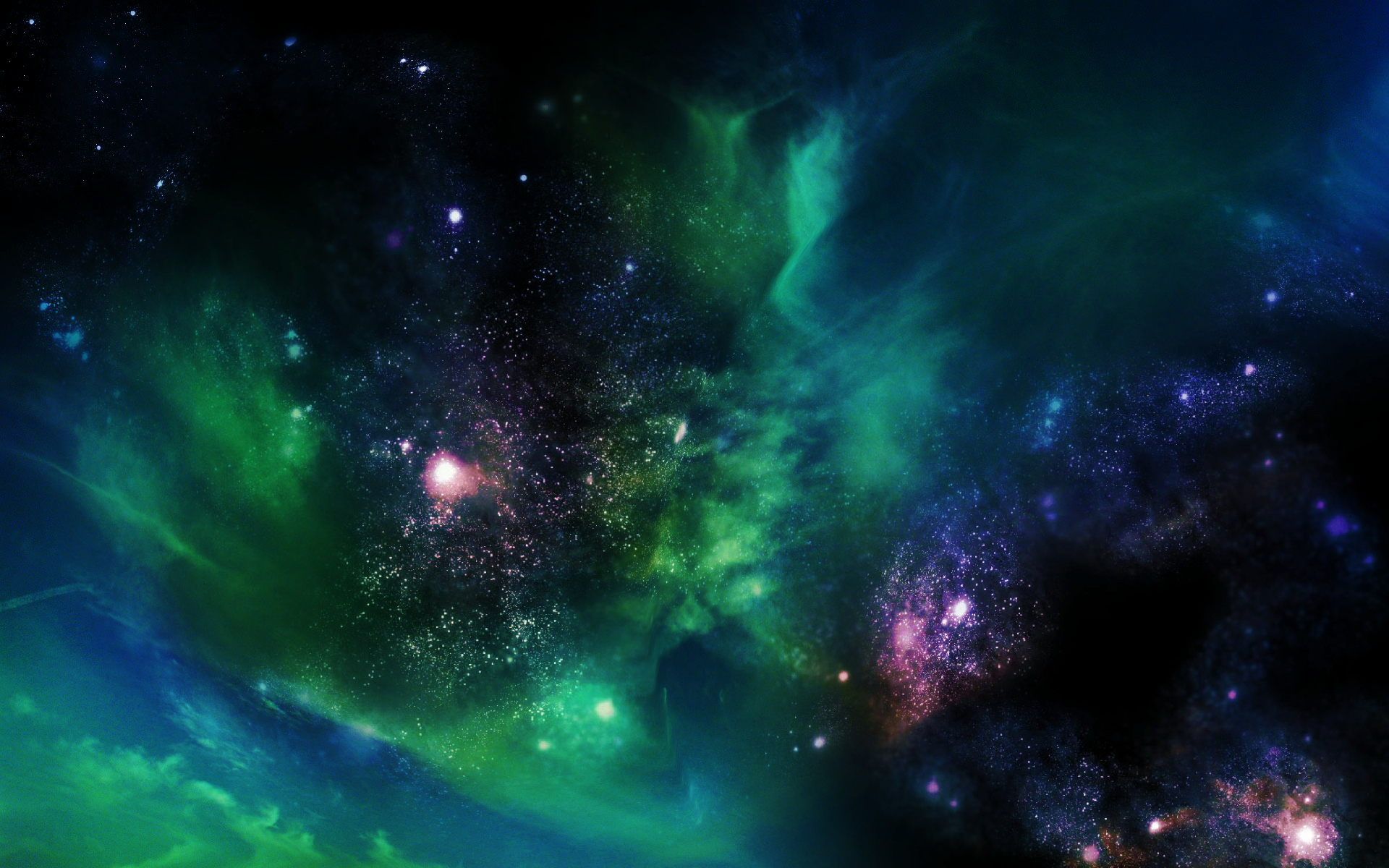
Astronomers have discovered the largest known cloud of energetic particles surrounding a galaxy cluster - the 20-million-light-year-wide cloud around the galaxy cluster PLCK G287.0+32.9.

A team of astronomers have mapped the nearby universe, from about 425 million to 800 million light-years (which translates to some 130 to 250 megaparsecs), and discovered the largest-known structure residing there.

Taking advantage of a cosmic "double lens," astronomers resolved more than 40 individual stars in a galaxy so far away its light dates back to when the universe was only half its present age.

A newly discovered cluster-scale strong gravitational lens, with a rare alignment of seven background lensed galaxies, provides a unique opportunity to study cosmology.

An international team of scientists led by astronomers from Tartu Observatory of the University of Tartu has discovered many superclusters in the universe, with the most prominent among them named the 'Einasto Supercluster'.

A few years ago, astronomers uncovered one of the Milky Way's greatest secrets: an enormous, wave-shaped chain of gaseous clouds in our sun's backyard, giving birth to clusters of stars along the spiral arm of the our galaxy.

A stunning river of stars has been spotted flowing through the intergalactic space in a cluster of galaxies about 300 million light years away.

The bubble is 10,000 times wider than the Milky Way and located 820 million light-years from our own galaxy. The astronomers have called their bubble Ho’oleilana – meaning “sent murmurs of awakening”.

For the first time, astronomers have just found evidence that some of the largest structures in space - cosmic filaments - rotate, on a scale of hundreds of millions of light-years.

The universe is full of billions of galaxies. Why do we see so much structure in the universe today? A 10-year survey of tens of thousands of galaxies has provided a new approach to answering this fundamental mystery.

One of the core assumptions of astronomy is that the universe appears the same in all directions, or it is isotropic. However, a recent study suggests that may not be the case.

The biggest explosion seen in the universe has been found. This record-breaking, gargantuan eruption came from a black hole in a distant galaxy cluster hundreds of millions of light years away.

Astronomers have measured a 40 billion solar mass black hole in the Holm 15A galaxy. Their results could lead to even more massive black holes.

The new observations show a mega-structure being assembled in a system called Abell 1758, located about three billion light-years from Earth. It contains two pairs of colliding galaxy clusters that are heading toward one another.

Astronomers have discovered a titanic structure in the early universe, just two billion years after the Big Bang - a galaxy proto-supercluster, nicknamed Hyperion.